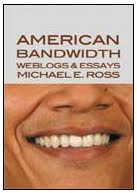It arrived with the election of Cardinal Joseph Ratzinger, who assumes the Holy See as Pope Benedict XVI. The new pontiff was greeted with thunderous applause in St. Peter's Square; the trappings and traditions of the Catholic Church were much in evidence this morning. The reception the new pope received was a reflex of courtesy and history. For many observant Catholics, however, the honeymoon will be short-lived. Pope Benedict XVI assumes the mantle of a church in crisis, with many challenges in the 21st century -- challenges some have already suggested the new pope is hardly up to.
 That catalog of challenges -- the church's role in the developing world; gay rights; the issue of priestly marriage; the issue of the ordination of women; and the continuing fallout from the church sex-abuse scandal in the United States -- isn't made any easier to address in an open -minded way because of one fundamental fact: the new pope is against most of them already.
That catalog of challenges -- the church's role in the developing world; gay rights; the issue of priestly marriage; the issue of the ordination of women; and the continuing fallout from the church sex-abuse scandal in the United States -- isn't made any easier to address in an open -minded way because of one fundamental fact: the new pope is against most of them already.The reputation of Joseph Cardinal Ratzinger precedes him handsomely; under John Paul II, Cardinal Ratzinger helped implement papal policy and underscore its infallability. To put it in a way that secular heathens with a love of the movies might understand: If John Paul II was Don Vito Corleone, Cardinal Ratzinger was a cross of Tom Hagen and Al Neri -- consiglieri and muscle rolled into one. Not for nothing was he known as "God's Rottweiler." Ratzinger was an ecclesiastical pit bull on matters of papal doctrine when he was a cardinal. Some have expressed the hope that, now that the size of his flock has increased ten ten-thousandfold overnight, the new pope might be more concilatory to those constituencies he's had the luxury of dissing from afar in the past.
This is probably a vain hope. Undoubtedly the new pope will take the opportunity at his investiture, a few days from now, to reach out to all the human permutations of the Catholic Church -- those people whose diversity is in evidence in St. Peter's Square right now. But the pope has gone on record as being 100 percent down with the teachings and doctrine of his predecessor; it's likely to be an exercise in futility to expect him to do a philosophical about-face.
For the elders of the church -- the cardinals that voted for the new pontiff -- Benedict represents continuity, in their minds a necessary doctrinal continuity that indicates a need to stand for the longstanding principles of the church. It's their way of dancing with them what brought them to the dance, of adhering to the absolutes, the foundational philosophy that defines Catholicism. In a thousand-year-old institution, change is almost necessarily glacial, regardless of the ambient temperature of the world around it.
But the modern calls for changes must confront that reality, as surely as the new pope will have to get his mind around the need for change, sooner or later.
There are dimensions to the Catholic membership that Benedict has alienated in the past: gay and lesbian Catholics, women seeking at least the possibility of ordination, priests hoping for marriage, victims of the sex scandal hoping for something like closure. To everything there is a season, the Bible says. For this pope, right out of the box, this is the season for mending fences.





